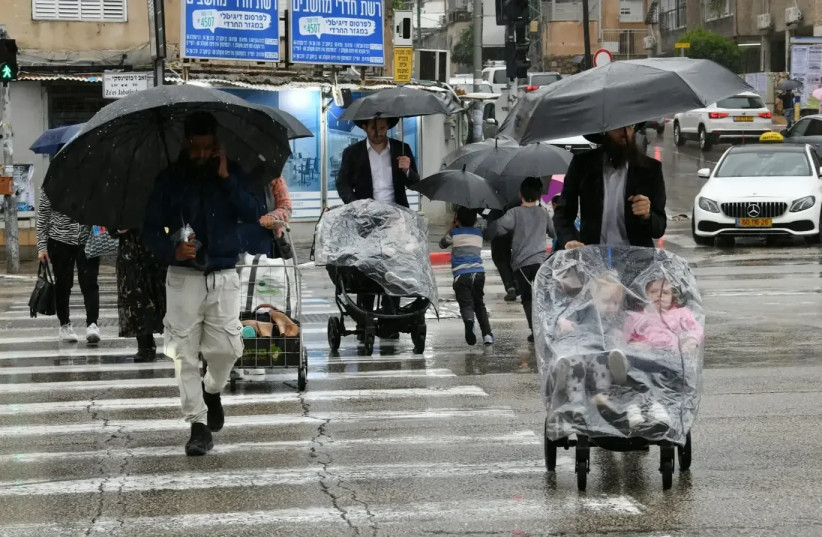The Israel Democracy Institute has announced the results of its eighth survey of the haredi (also known as ‘ultra-Orthodox’) community in Israel, assessing the community’s population growth, standard of living, employment and education rates, and standard of living, as well as haredi Israelis’ views on Israeli state and society. The results show a community moving slowly but consistently toward greater integration in Israeli society.
The haredi birth rate has gone down in recent years— from an average of 7.5 live births per woman in 2003-2005 to 6.4 in 2020-2022— but remains much higher than the fertility rate of other Jewish women in Israel, which is 2.5. The average age at first marriage among haredi men was 23 in 2021, and about 22 for women, with the men and women being about one year older— 24 for men, 23 for women— at the birth of their first child.
Haredi society still revolves around two ‘capital cities,’ Jerusalem and Bnei Brak, which together add up to 41.5% of the national haredi population. But these cities dominate haredi life less in 2023 than they have in past decades, with 26% of Israeli haredim living in ‘satellite cities’ such as Beit Shemesh, Modi’in Illit, Beitar Illit, and Elad, and another 11% living in large cities such as Ashdod, Petah Tikva, Haifa, Rehovot, and Netanya.
The poverty rate among haredi Israelis has gone down over the last decade, from about 53% in 2009 to 44% in 2019, but it remains double the poverty rate among the general population (22%.) Haredi households spend an average of NIS 2,866 per person per month, barely half the NIS 5,497 that other Jewish households spend per person per month on average.

Education, employment rates have gone up over the years, especially among women
Most haredi children attend schools that are ‘recognized,’ but not run, by the state, and girls tend to advance further than boys do. 3.5% of haredi schools are state schools, 74% are recognized under the compulsory education law, and 22.5% are exempt from the law altogether.
In the 2019-2020 school year, 59% of haredi girls took at least one matriculation (bagrut) exam, almost double the rate (31%) a decade earlier, whereas among boys only 15% did— down a percentage point from ten years ago. The proportion of haredi students who actually obtained a bagrut certificate, however, was only 14%, compared to 83% in the State and State-religious education systems.
In 2002, only about a third of haredi men, and just over half of haredi women, were employed. Those numbers surged between 2003 and 2015, although the employment rate among men seems to have stagnated, from 2015-2021, the latest data available. Today, just over half (51%) of haredi men are employed, as well as more than three-quarters (78%) of women.
